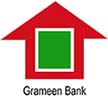Microfinance institutions (MFIs) provide financial services, involving small amounts of money, to poor clients. Services include savings deposits, loans, payment transfers, insurance, and other financial services.
Microfinance Institution Challenges
Delivering financial services to poor people, especially in rural and undeveloped areas, presents some unique challenges.
High Transaction Costs
High transaction costs have been a major barrier. A for-profit bank must cover operating costs and generate a profit. If a client only has $5 to deposit in a savings account, the bank loses money on that transaction. If that same client with $5 to deposit must pay $0.25 to take a bus to the nearest bank, they lose 5% of their capital going to the bank. As far as loans go, the cost of administering 500 loans of $100 each versus 1 loan of $50,000 is substantial.
No Credit History or Collateral
Traditional banks typically require a credit history and collateral from borrowers seeking a loan. Poor people generally do not have either so are viewed as high-risk clients.
Lack of Access
Many poor people do not have access to mobile banking, nor do they live near a bank or ATM, so just getting to a bank uses precious time and money.
Diverse Financial Needs
There is no one-size-fits-all when it comes to what financial services poor people need and want.
 Savings – some people just want to earn a decent wage at a steady job and have a safe place to keep their savings.
Savings – some people just want to earn a decent wage at a steady job and have a safe place to keep their savings.- Loans – not every borrower is an entrepreneur wanting to start an income-generating activity like raising chickens for eggs to sell, or to build a green microenterprise such as a solar cooker business. Some families need a loan because a sick child needs medicine.
- Payment Transfers – others need a low-cost way to send money home (remittance) from jobs in the city or overseas.
- Insurance – a farmer might want insurance to provide a financial safety net in case of crop failure.
Microfinance Institutions (MFI’s) and Organizations
Over several decades, microfinance institutions (MFIs) have been established all over the world. Some are nonprofit and others are for profit. Related organizations have emerged to support MFIs with research, data analysis, best practices, training, advocacy, and policy formation. I selected a few to investigate.
 Grameen Bank – founded during the 1970s in Bangladesh, is possibly the first modern MFI and probably the most well known. Grameen Bank which means “village bank”, began as a small project, grew into a national organization and became a model for microfinance institutions in other countries.
Grameen Bank – founded during the 1970s in Bangladesh, is possibly the first modern MFI and probably the most well known. Grameen Bank which means “village bank”, began as a small project, grew into a national organization and became a model for microfinance institutions in other countries.
There are some notable differences between Grameen Bank and a conventional bank: Grameen Bank has a stated purpose to help alleviate poverty, is owned by the poor women who use its services, and goes to the people instead of the people going to the bank.
Accion – is a nonprofit organization that helps build MFIs by providing management expertise, connection to commercial banks, development of industry standards, and participation on MFI boards.
Consultative Group to Assist the Poor (CGAP) – is an independent group housed at the World Bank. CGAP provides MFI industry information, develops and promotes standards, and advises governments, MFIs, donors, and investors. One program, the Microfinance Gateway, contains an extensive online library. The Advancing Financial Access for the World’s Poor Annual Report 2012 is full of excellent information and some amazing photographs.
EcoMicro – is a program co-financed by Multilateral Investment Fund (MIF) and Nordic Development Fund (NDF) that works with MFIs in Latin America and the Caribbean to develop green financial projects.
Kiva – is a web-based nonprofit organization that collects money from individual investors and provides loans through an international network of Field Partners (MFIs).
Women’s World Banking Ghana (WWBG) – is an MFI in Ghana affiliated with the Women’s World Banking organization. WWBG services include savings, credit, remittance, and virtual banking.
Zidisha – is a web-based nonprofit organization that directly connects lenders and borrowers and administers the loans themselves.
Imagine and Take Action
For those of us who do have access to financial services, we most likely have checking and savings accounts, an ATM card, at least one credit card, ability to transfer money electronically, insurance, a 401k, IRA, or other retirement account, perhaps a car loan or mortgage, a bank or ATM nearby, and the ability, if we choose, to perform any financial  transaction on a computer, smartphone, or tablet.
transaction on a computer, smartphone, or tablet.
Imagine what it would be like if everyone had access to financial services. Want to take action to help bring financial services to all people and be green? Contribute money to a green MFI or MFI support organization, invest in a microloan for a green microenterprise, or spread the word. Be creative.
Related Posts
Resources
- Accion
- Accion Ambassadors Blog – The Necessity of Being Green (link inactive October 2018)
- Consultative Group to Assist the Poor (CGAP)
- EcoMicro
- Grameen Bank
- Kiva
- Women’s World Banking Ghana (WWBG)
- Yale Insights – What are the realities of microfinance? (link inactive 08/06/13)
- Zidisha
